#upcycledfashion
Explore tagged Tumblr posts
Text
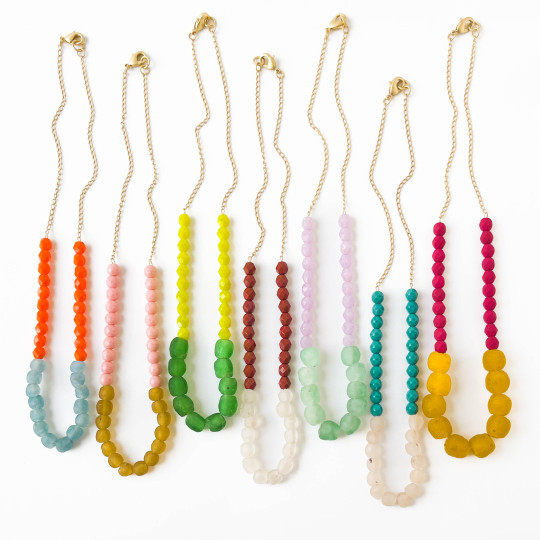
NEW recycled glass beaded necklace ❤️ nestprettythings.com
#recycledglass#ecofriendlyjewelry#sustainablefashion#handmadejewelry#colorfulnecklace#glassjewelry#upcycledfashion#bohojewelry#statementnecklace#ethicalfashion#uniquejewelry#artisancrafts#fashionaccessories#greenfashion#ecochic#wearableart#repurposedmaterials#vibrantcolors#ecofriendlystyle#sustainableliving
29 notes
·
View notes
Text
instagram
Follow me on insta!! @rottedbunnii

#emo#scemo#diy#the number twelve looks like you#rawring 20s#spacehey#purple hair#alternative#upcycledfashion#00s#00s music#Spotify#Instagram
3 notes
·
View notes
Text
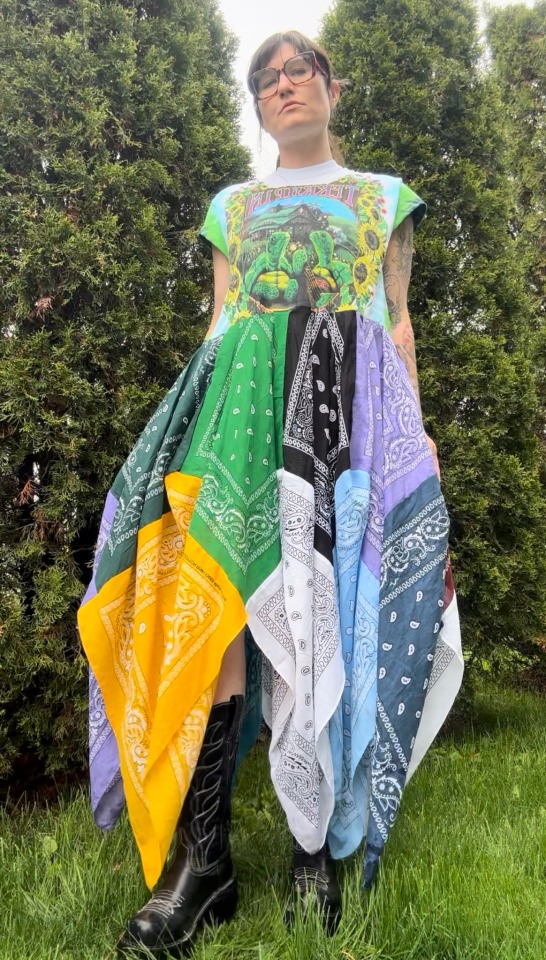
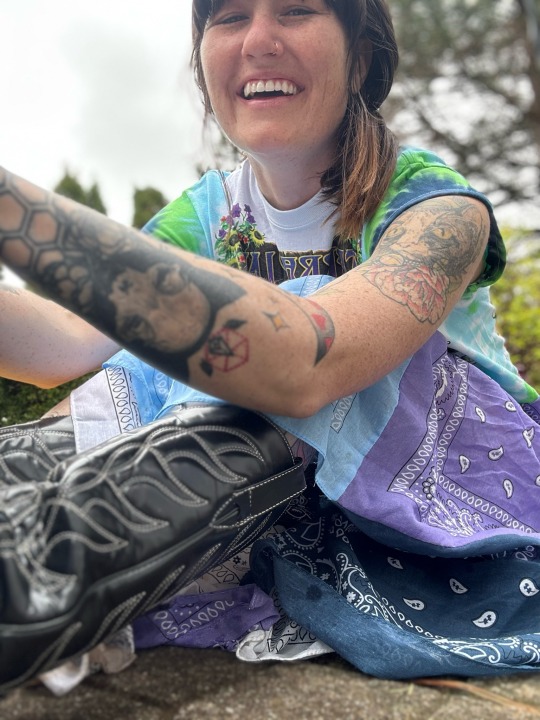
I made this dress and it’s now my whole personality
#girlblogging#aesthetic#grunge#vintage#trippy#hippie#witch#female hysteria#dead#pale#grateful dead#terrapin#bandana dress#upcycledfashion#handmade#handmadeclothing#fairy fashion#fairy grunge#fairy girl#mystical#roadtrip
11 notes
·
View notes
Text

ebay work of art by Damien Hirst
Hirst painted one of his abstract art pieces on none other than best-selling 3413 Unisex Triblend S/S Tee
#streetwear#artfashion#vintage#paintedclothes#customtshirt#wearableart#upcycledfashion#diyfashion#creativefashion#urbanstyle#artisticclothing#fashiondesign#contemporaryart#exclusive#limitededition
1 note
·
View note
Text
Discover the true essence of luxury with Potbel's exquisite handcrafted potli bags and belts. Each piece is meticulously crafted with attention to detail, combining traditional craftsmanship with modern elegance
#Potbel#SustainableFashion#EthnicAccessories#UpcycledFashion#FabricWaste#EcoFriendly#Handcrafted#Potlis#EthnicBelts#BeautifullyCrafted
0 notes
Text
How Can the Fashion Industry Be More Sustainable?

Introduction
The fashion industry, known for its creativity and innovation, also has a notorious reputation for its environmental and ethical impacts. As awareness grows, the need for sustainability in fashion becomes more urgent. But how can the fashion industry truly become more sustainable? Let's explore the multifaceted approach required to make this vision a reality.
Understanding Sustainability in Fashion
Definition of Sustainability in the Context of Fashion
Sustainability in fashion means creating and consuming clothing in a way that preserves the environment and promotes social equity. It involves considering the entire lifecycle of a garment, from raw material extraction to production, use, and eventual disposal.
Key Principles of Sustainable Fashion
Environmental Protection: Minimizing harm to the environment through sustainable practices.
Social Responsibility: Ensuring fair labor practices and supporting communities.
Economic Viability: Creating a business model that supports long-term sustainability without sacrificing profitability.
Environmental Impact of the Fashion Industry
Resource Consumption
The fashion industry is a major consumer of natural resources. The production of textiles requires vast amounts of water and energy. For example, producing a single cotton t-shirt can use up to 2,700 liters of water.
Pollution and Waste
Fashion is also a significant contributor to pollution. Textile dyeing and treatment are responsible for about 20% of global industrial water pollution. Additionally, the fast fashion model leads to massive waste, with millions of tons of clothing ending up in landfills every year.
Ethical Issues in Fashion
Labor Practices
Many garments are produced in developing countries where labor laws may be lax. Workers often face poor working conditions, low wages, and exploitation. Promoting fair trade and ethical labor practices is essential for a sustainable industry.
Animal Welfare
The use of animal products in fashion, such as leather, fur, and wool, raises concerns about animal welfare. Sustainable fashion seeks alternatives that do not harm animals.
Sustainable Materials
Organic Cotton
Organic cotton is grown without synthetic pesticides or fertilizers, reducing environmental impact and promoting soil health.
Recycled Fabrics
Recycling fabrics helps reduce waste and resource consumption. Brands are increasingly using recycled polyester, nylon, and other materials to create new garments.
Innovative Materials
New materials like mushroom leather, pineapple fiber (Piñatex), and lab-grown fabrics offer sustainable alternatives to traditional textiles.
Slow Fashion Movement
Definition and Principles
Slow fashion emphasizes quality over quantity, encouraging consumers to buy less and choose well-made, timeless pieces. It contrasts sharply with the fast fashion model, which prioritizes cheap, disposable clothing.
Benefits of Slow Fashion
Slow fashion promotes environmental sustainability, reduces waste, and supports ethical labor practices. It encourages a more mindful approach to consumption.
Circular Fashion Economy
Concept of Circular Economy
A circular economy aims to eliminate waste by keeping products and materials in use for as long as possible. In fashion, this means designing garments for durability, repairability, and recyclability.
Implementing Circular Practices in Fashion
Brands can adopt circular practices by using recyclable materials, designing for longevity, and offering repair and recycling services to consumers.
Eco-Friendly Production Processes
Reducing Water Usage
Innovative techniques like waterless dyeing and closed-loop water systems can significantly reduce the water footprint of textile production.
Non-Toxic Dyes and Finishes
Using natural and non-toxic dyes and finishes minimizes the release of harmful chemicals into the environment.
Energy-Efficient Manufacturing
Adopting energy-efficient technologies and renewable energy sources can reduce the carbon footprint of garment production.
Sustainable Fashion Brands
Examples of Brands Leading the Way
Patagonia: Known for its commitment to environmental activism and use of recycled materials.
Stella McCartney: Pioneers in using sustainable and cruelty-free materials.
Eileen Fisher: Emphasizes simplicity, quality, and sustainable practices.
Case Studies
Exploring specific case studies of these brands can provide valuable insights into successful sustainable practices.
Consumer Behavior and Sustainability
Importance of Consumer Choices
Consumers play a crucial role in driving sustainability. By choosing sustainable brands and products, they can influence the market towards more ethical practices.
Tips for Sustainable Shopping
Buy less, choose well-made items.
Support brands with transparent, ethical practices.
Opt for second-hand or vintage clothing.
Upcycling and Recycling in Fashion
Techniques and Benefits
Upcycling involves creatively reusing old garments to create new, unique pieces. Recycling breaks down old textiles to produce new fibers.
Successful Upcycling Projects
Highlighting projects like Levi's Water<Less jeans or H&M's garment recycling program can inspire more sustainable choices.
Technological Innovations
Advances in Sustainable Fashion Technology
3D Printing: Reduces waste by creating garments on demand.
Blockchain: Increases transparency and traceability in supply chains.
Smart Fabrics: Developments in biodegradable and renewable materials.
Future Trends
The future of sustainable fashion may see more integration of technology, personalized clothing production, and continued innovation in materials.
Challenges in Achieving Sustainability
Economic Challenges
Transitioning to sustainable practices can be costly, posing a challenge for smaller brands. However, the long-term benefits often outweigh the initial investment.
Social and Cultural Barriers
Changing consumer habits and perceptions about fashion is another significant challenge. Education and awareness are key to overcoming these barriers.
Policy and Regulation
Government and International Policies
Governments can support sustainability through regulations and incentives. Policies like the European Union's Circular Economy Action Plan are steps in the right direction.
Role of Regulations in Promoting Sustainability
Effective regulation can ensure that companies adhere to sustainable practices, reducing environmental and social impacts.
Conclusion
The fashion industry has a long way to go to achieve true sustainability, but the path is clear. By adopting sustainable materials, ethical practices, and innovative technologies, and by fostering consumer awareness and government support, the fashion industry can become a force for positive change. It's time for everyone—brands, consumers, and policymakers—to play their part in creating a more sustainable future.
FAQs
What is sustainable fashion?
Sustainable fashion refers to clothing that is designed, produced, distributed, and consumed in ways that are environmentally friendly and socially responsible.
How can consumers support sustainable fashion?
Consumers can support sustainable fashion by choosing brands that prioritize sustainability, buying less, opting for second-hand clothing, and supporting ethical labor practices.
What are some common sustainable materials used in fashion?
Common sustainable materials include organic cotton, recycled polyester, hemp, bamboo, and innovative materials like mushroom leather and Piñatex.
How does slow fashion differ from fast fashion?
Slow fashion focuses on quality, timeless designs, and ethical production, encouraging consumers to buy fewer, better-made items. Fast fashion emphasizes quick production and low costs, often at the expense of environmental and ethical standards.
What role do regulations play in promoting sustainability in fashion?
Regulations can ensure that fashion companies adhere to sustainable practices, reducing environmental harm and promoting fair labor conditions. They can also incentivize the development of new, sustainable technologies and practices.
#SustainableFashion#EcoFriendlyFashion#SlowFashion#CircularEconomy#EthicalFashion#GreenFashion#FashionRecycling#EcoChic#SustainableMaterials#FashionInnovation#EthicalConsumerism#FashionWaste#UpcycledFashion#GreenTextiles#FashionRevolution
0 notes
Text
Vivaia's Upcycling Initiatives: Transforming Fashion Waste into Treasures 🌍
The fashion industry’s waste problem is significant, but Vivaia is on a mission to change that! Their upcycling initiatives are turning discarded materials into stunning, eco-friendly fashion. 🌿

In our latest article, we dive into:
The rise of sustainable fashion and upcycling
How Vivaia is leading the way in repurposing waste
Exciting collaborations with other brands
The positive impact on the environment and community
How customers are responding to upcycled fashion
🔗 Read the full article here
What are your thoughts on upcycled fashion? Have you tried Vivaia’s products? Share your experiences and thoughts on sustainable fashion!
Thank you for supporting eco-friendly fashion! ✨
#SustainableFashion#Upcycling#EcoFriendly#Vivaia#FashionRevolution#GreenFashion#CircularEconomy#FashionWaste#EcoChic#SustainableLiving#EthicalFashion#FashionInnovation#UpcycledFashion#EcoFriendlyFashion#FashionImpact#WasteReduction#FashionTrends#GreenLiving#ResponsibleFashion#FashionWithPurpose#FashionForFuture#EcoStyle#GreenWardrobe#SustainableDesign#FashionWithAConscience#RecycledMaterials#EcoFashionista#UpcyclingDesign#FashionChange#CircularFashion
0 notes
Text
youtube
#bridgetdickey#bridgetdickeydesigns#fashion#handmade#upcycle#upcycled#upcycledfashion#summerfashion#designer#tropical#vintage inspired#tiki#tiki fashion#Youtube
0 notes
Text
💖✨ Embrace elegance with our Pink Designer Saree! ✨💖
Features: 🌸 Intricate Pearl Work 👗 Stylish Readymade Blouse Included
Perfect for any occasion, this saree blends timeless charm with contemporary style.
Elevate your wardrobe with this exquisite piece today! 💕




World Wide Free Shipping from Samyakk.com �� ______ ______ Name: Samyakk Clothing Email: [email protected] PH: 7829928490 Website: https://www.samyakk.com/ Product Link: https://www.samyakk.com/pink-designer-saree-with-pearl-work-and-readymade-blouse-gd1620 ______ _____
#DesignerSaree #PearlWork #Fashionista
#Samyakk#SamyakkFashion#SamyakkClothing#SamyakkSaree#Fashion#Style#instafashion#fashionista#ootd#fashionstyle#lookbook#wiw#streetstyle#WomensFashion#Style2024#FashionablySustainable#BohoChic2024#EffortlessChic#ModernVintage#UpcycledFashion#InclusiveStyle#fashionblogger#fashionlover#fashiondesigner#fashionweek#fashionphotography#EthnicWear#OnlineShopping#TraditionalWear#Outfits
1 note
·
View note
Text


Luxury Redefined: Own a Piece of Emirates History with Upcycled Aircraft Collection! Dubai's reputation as a fashion powerhouse is undeniable, and its flag carrier, Emirates, is taking things a step further. From 2024, Emirates will launch a limited-edition collection of luggage, handbags, and accessories crafted from a surprising source: its very own Airbus A380 and Boeing 777 aircraft! Read more on bagx.ae
#EmiratesAirlines#UpcycledFashion#SustainableLuxury#TravelAccessories#EcoFriendlyFashion#LuxuryTravel#FirstClassFeeling#LimitedEdition#PersonalizedGifts
0 notes
Text
Beyond Labels: Rethinking Leather in a Sustainable Future🐮🐏
Leather. Two syllables that spark fierce debate in the fashion world. A symbol of luxury, durability, and timeless style for some, a sustainability nightmare for others. But what if there was a way to bridge the gap? Let's dive into the complex politics of animal products and explore a more balanced perspective.

The Ethical Dilemma:
The environmental impact of animal agriculture is undeniable. From deforestation for grazing land to water usage, the statistics can be sobering. Additionally, concerns about animal welfare in factory farms raise questions about the ethics of using animal products. However, there's another side to the story.
The Case for Responsible Husbandry:
Many farms practicing responsible animal husbandry prioritize animal welfare. They provide ample space, humane treatment, and sustainable land management practices. These ethical farms utilize the entire animal, ensuring minimal waste. The hides used for leather are a byproduct of the food industry, not an additional reason for raising animals.
Quality Over Quantity:
Think of your favorite leather jacket or bag. Chances are, it's well-made and meant to last for years, even decades. Leather's durability reduces overall consumption and the need for frequent replacements. This stands in stark contrast to fast fashion's emphasis on cheap, disposable clothing.
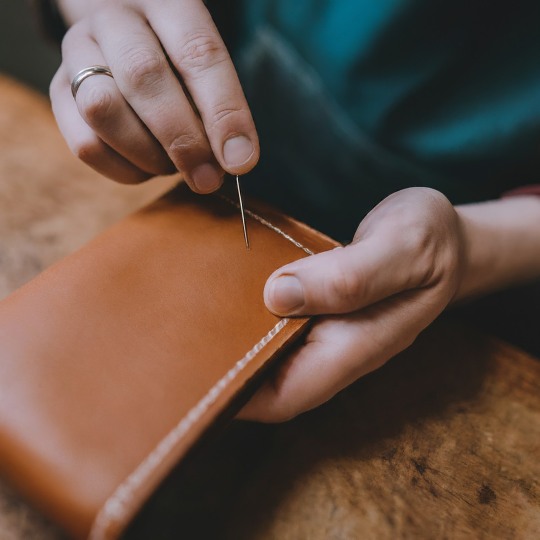
Beyond Black and White:
When it comes to fur, faux fur presents a clear ethical and environmental advantage. Its versatility, style, and affordability make it a great alternative. However, leather presents a more nuanced situation. Here's where mindful consumerism and transparency are key.
The Future of Fashion:
The future lies in embracing sustainable practices across the board. Supporting brands committed to responsible animal husbandry and utilizing eco-friendly tanning processes is crucial. Additionally, innovations in recycled and upcycled materials offer exciting possibilities.
Artisanal Expertise and Job Creation:
Beyond the environmental benefits, sustainable fashion supports local economies. Artisanal leatherwork and fabric making traditions thrive on responsible practices. This creates jobs and empowers communities, particularly in developing nations.
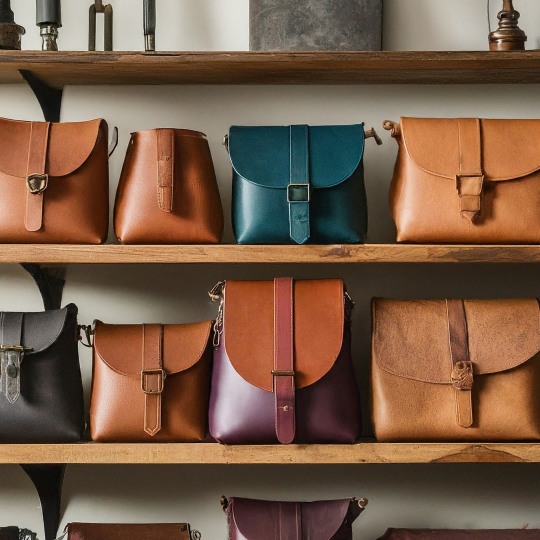
The Choice is Yours:
There's no one-size-fits-all answer. The goal is to encourage critical thinking. Do you prioritize affordability and readily available alternatives like faux fur? Or are you willing to invest in high-quality, ethically sourced leather pieces that will last a lifetime?
The Question Remains:
Have we reached a point where we can appreciate the craftsmanship and longevity of ethically sourced leather goods while also advocating for sustainable and ethical practices in the fashion industry as a whole?
Let's move beyond rigid labels and embrace a conversation filled with nuance and solutions. Share your thoughts below! How can we create a fashion future that's both stylish and responsible?
Sign up for our newsletter a UniqueBoutiqueStreetwear
#sustainablefashion#ecofashion#ethicalfashion#consciousconsumerism#slowfashion#veganfashion#sustainableleather#ethicleathersourcing#responsiblehusbandry#leathercraft#qualityoverquantity#fauxfur#recycledmaterials#upcycledfashion
0 notes
Text
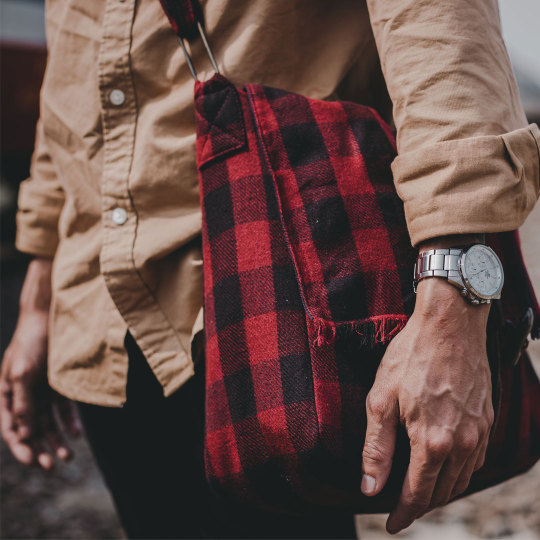
🎨 Dive into flannel innovation! Our designer crafted this red and black checkered single-shoulder backpack during downtime, using discarded fabric. More than an accessory, it's a reclaimed masterpiece, breaking fashion boundaries. What's your take on this sustainable style? 💡✨
🔜 www.flannelgo.com
📸 hung pham
0 notes
Text
Revolutionizing Style with Sustainable and Upcycled Fashion
Hey there, Tumblr fam! Let's chat about the fashion revolution that is sustainable and upcycled fashion. 🌿 Sustainable Fashion: It's all about making responsible fashion choices. Brands in this space prioritize eco-friendly materials, ethical labor practices, and reducing their carbon footprint. When you choose sustainable fashion, you're supporting a more environmentally conscious way of dressing. Upcycled Fashion: Have you tried it? It's like fashion's version of recycling. Upcycling takes old or forgotten clothes and transforms them into fresh, trendy pieces. It's a creative and sustainable way to breathe new life into your wardrobe and reduce waste. What's fantastic is that you can embrace both sustainable and upcycled fashion. By choosing to shop from eco-conscious brands and experimenting with your own upcycling projects, you're contributing to a brighter, more ethical fashion future. Whether it's thrift shopping, DIY-ing, or supporting responsible brands, you're making a stylish statement that's kind to the planet. 🌟 So, how do you integrate sustainable or upcycled fashion into your style? Share your thoughts, experiences, and favorite fashion hacks below! 👗🌎
0 notes
Text

🌱👗 Crafted with Love and Care 🌟♻️
Join me in exploring the beautiful world of upcycled fashion, where creativity meets sustainability. Discover how repurposing old clothing can breathe new life into your wardrobe and reduce your environmental footprint. Let's craft for a better tomorrow! 💚
0 notes
Text

#fashionwithapurpose#sustainablefashion#ethicalfashion#consciousfashion#slowfashion#greenfashion#ecofashion#fairtradefashion#upcycledfashion#thriftedfashion
0 notes
Photo

@quirkybaekolkata has transformed their #prelovedsaree into a beautiful #upcycledjacket . I have received it with a lovely pack and cordial note. Totally fida on the work. Thanks much. #upcycledfashion #preloved #kanthastitch #jacketstyle #jacket #unisexclothing #fashioniesta #fashionblogger #menfashion #menfashionblogger #selfieontimer #motog825gshot https://www.instagram.com/p/CpvSKXKvXR8/?igshid=NGJjMDIxMWI=
#prelovedsaree#upcycledjacket#upcycledfashion#preloved#kanthastitch#jacketstyle#jacket#unisexclothing#fashioniesta#fashionblogger#menfashion#menfashionblogger#selfieontimer#motog825gshot
1 note
·
View note